Building Win-Win Narratives Through Causal Mapping
Last weekend I got up early to head to Bridgewater State. I had received a call from Ed Brush, a chemistry professor and organizer of the school’s annual Symposium on Sustainability and the Environment. “We want to introduce a group of 80 students and faculty from colleges in the Northeast to systems thinking. Help them ‘think outside the box’. Show them how a systems approach can be used to solve environmental and sustainability challenges.” O.K. He hit all my keywords: students, systems thinking, applied, real world. I had to say yes.
A bit of background. There were about 80 college students, three high school students and a small group of faculty. All the students were there present research posters on water, energy, toxicity, bees and more. These were important projects that could have a real impact on our region.
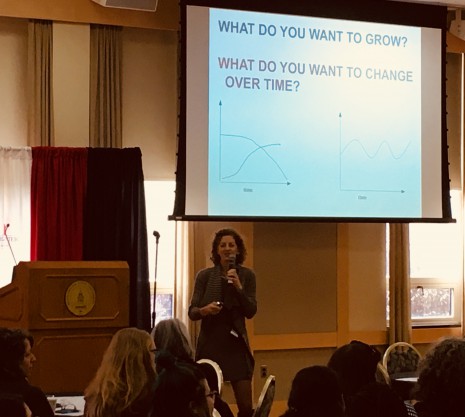 After a game (of course), I started by asking them to think about their projects. What did they want to change?
After a game (of course), I started by asking them to think about their projects. What did they want to change?
Here is what these students said about the changes they wanted to see:
Less microplastic pollution.
More native bee diversity.
More sustainable agriculture
Less solvent use
Less caffeine exposure in childhood
Do you care about those things? I do. If you like clean air, drinkable water, a safe healthy environment, and broccoli, squash, apples and almonds (all pollinated by honey bees) then you care too.
Whether these students know it or not they are Very Important People doing very important work.
As the students described their research projects I found myself remembering why I got up early that morning. I was honored to be working them.
We then moved on to the nature of complex systems hovering on one key characteristic: Systems are made up of tightly coupled interconnections. It’s easy to say “everything is connected to everything else” but as they soon discovered, we often forget that simple truth.
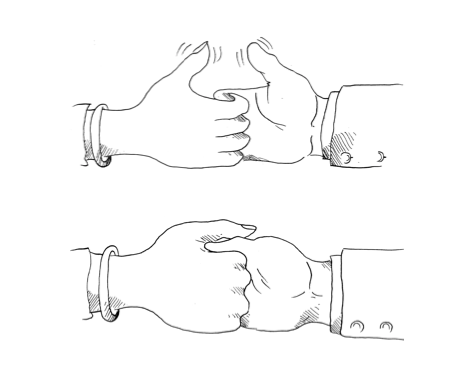 We played another game (thumb wrestling) to get a baseline of their embodied understanding of interconnections. Most of the students had played the game. There are commonly known rules. I explained the goal carefully: ‘To get as many points as you can.” It is possible to collaborate, allowing each person to pin the other’s thumb thus winning many points for each partner. But for the most part, mental models about the the system structure (the game) got in the way of significantly improving performance. As efforts increased, performance actually went down. 90% of the participants did not take the opportunity to work together or in systems language, to leverage interconnection.
We played another game (thumb wrestling) to get a baseline of their embodied understanding of interconnections. Most of the students had played the game. There are commonly known rules. I explained the goal carefully: ‘To get as many points as you can.” It is possible to collaborate, allowing each person to pin the other’s thumb thus winning many points for each partner. But for the most part, mental models about the the system structure (the game) got in the way of significantly improving performance. As efforts increased, performance actually went down. 90% of the participants did not take the opportunity to work together or in systems language, to leverage interconnection.
There is no shame in this. Just good information. You have to start somewhere.
Next we looked at the UN Sustainable Development Goals or SDGs in the context of their research projects. The SDGs are 17 interrelated global goals outlined by the United Nations.
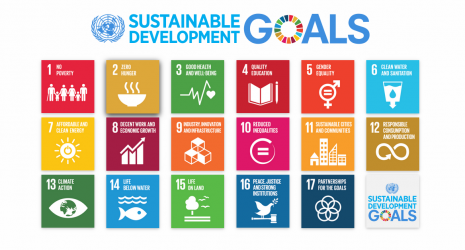
We put our heightened awareness of interconnections into practice.
Using wikki sticks and SDG cards, students and faculty looked for possible causal connections among the SDGs.
In what ways could they drive positive change through closed loops of cause and effect (e.g. feedback loops)? Students then set their own research project “maps” within the context of these i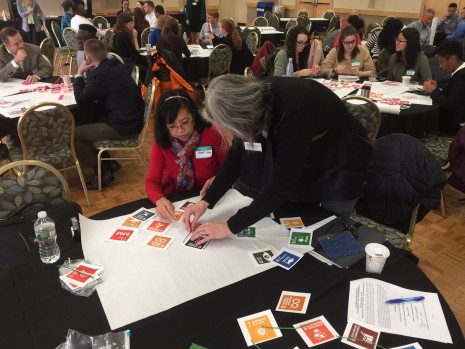 nter-related SDG goals.
nter-related SDG goals.
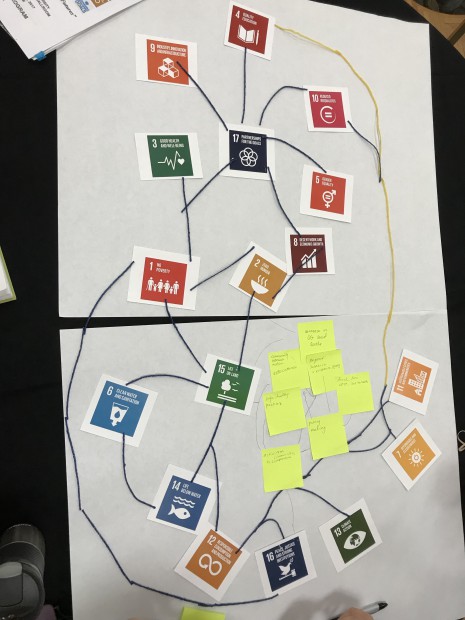 Groups looking at improving air and water quality for instance explored how their research projects fed (and were fed by) larger sustainable development goals such as Goal 3: Good Health and Well-Being and Goal 8: Decent Work and Economic Growth.
Groups looking at improving air and water quality for instance explored how their research projects fed (and were fed by) larger sustainable development goals such as Goal 3: Good Health and Well-Being and Goal 8: Decent Work and Economic Growth.
Mapping student research projects into the larger landscape of the SDGs was a simple idea. It allowed students to actively build their own win-win narratives by finding the causal connections between their local projects and global sustainable development goals.
While the airwaves are cluttered with stories of conflict and stalemates, these VIPS are working diligently, thoughtfully and rigorously to solve our worlds greatest problems. May we seek them out and support them. If we do, our future will be in good hands.
For more information about Bridgewater States Annual Symposium on Sustainability and Environment, contact Ed Brush at EBrush@Bridgew.Edu




